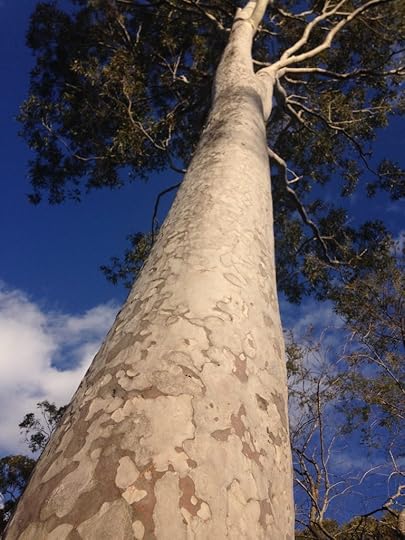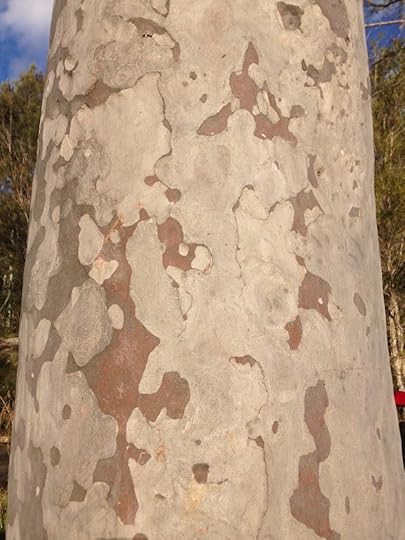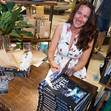Zena Shapter's Blog, page 10
December 18, 2019
FREE Critique Guide
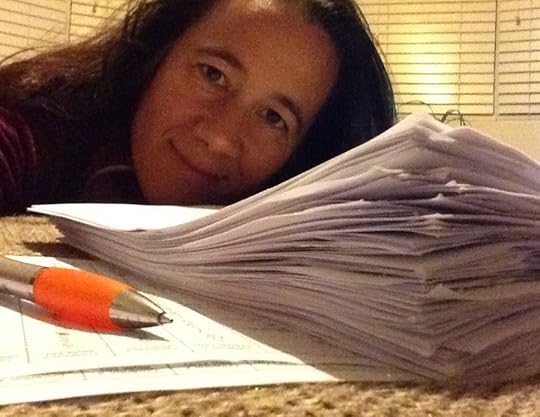
‘Tis the season to be jolly, or in the case of writers… the season to get creative and seek feedback on our endeavours!
I know a lot of writers, and the vast majority of us look forward to this time of year, when we can step away from our usual routines and focus on a writing project. Pure joy!
A vital part of the writing process is getting feedback on work before sending it into the world, and the more professional that feedback the better. This lead to my founding the Northern Beaches Writers’ Group back in 2009, and to my daily work as an editor, mentor and teacher of creative writing. Based on the millions of words I have read and critiqued through those activities, I have written a FREE guide to help others when giving or receiving a critique, and I thought I’d share it here, so you can share it with anyone who might be interested! Consider it an end-of-year gift!
The guide is for:
anyone giving a writer a critique of their work, andwriters receiving a critique.
It covers:
Approaching a CritiqueHow to Critique: 5 TipsVerbal Critiques: 10 TipsPost-Critique Reflection: Could you do better yourself?Receiving a Critique: 6 Tips
Most importantly when it comes to giving writers feedback: always bear in mind it’s hard for ALL writers to share drafts of their work, let alone take criticism; and that we ALL need to seek feedback to develop our skills with humility and gratitude. If you agree, read on – the guide is over here!
Of course, if you would prefer any one-on-one assistance, I offer editing and mentorship services, and I’d love to help you further!
Otherwise, thank you for reading and have fun sharing and receiving critiques!
November 10, 2019
‘Of Beasts & Butterflies’ – Launched by @ZaliSteggall!
Happy Book Day! Congratulations to all the fine writers included in the latest NBWG anthology, ‘Of Beasts & Butterflies’, launched on Saturday by our local Federal MP Zali Steggall! It’s an anthology of reimagined fairytales for a modern Australia, and I had the honour of being the anthology’s Editor-in-Chief, as well as writing a story for it! What fun!
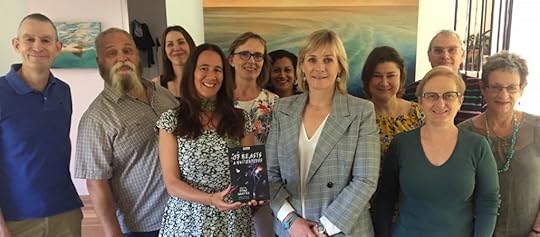
The anthology features stories inspired by familiar tales such as Cinderella, Narcissist, The Little Mermaid, Sleeping Beauty, The Sorcerer’s Apprentice, and Little Red Riding Hood; as well as the unfamiliar tales of The Lovers Who Became Butterflies, The Little Fairy Sister, In A Thousand Years Hence, and The Shepherdess & the Chimney Sweep.
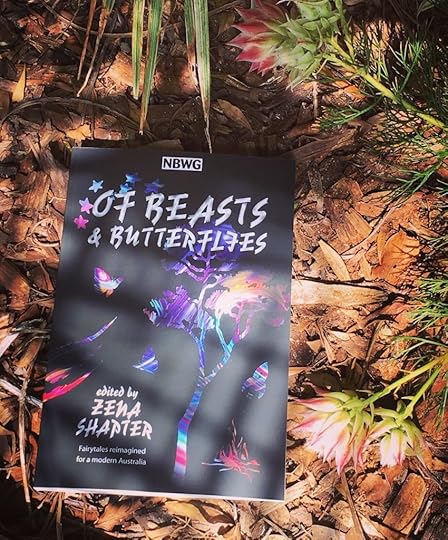
Once upon a time, fairytales were magical,
enchanting tales where anything could happen, and the real world often met the
supernatural with a creative spark that captured our imaginations. Often
intended for or featuring children, they were handed down from storyteller to
storyteller, and many have been adapted and retold countless times.
‘Of Beasts & Butterflies’ is no exception, and I’d like to thank the authors who contributed, for running with my idea to create a broad range of reimagined tales not for children!
Their generous imaginations, creativity, and collaborative spirit has produced a fascinating and delightful anthology of original stories. Well done: Phil Burgin, Azmeena Kelly, Tara Ray, Joanna Mawson-Lee, Susan Steggall, Mijmark, Suzi Green, Rodney Jensen, Bronwen Bowden, Claire Hampson and Sonia Zadro!
The launch was a simple and fun afternoon. I gave a little speech, then so did Zali, we enjoyed an author reading by Susan Steggall, then we all celebrated with some delicious snacks…
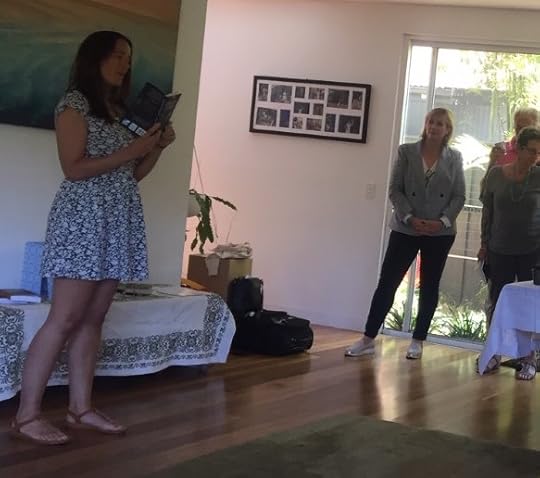
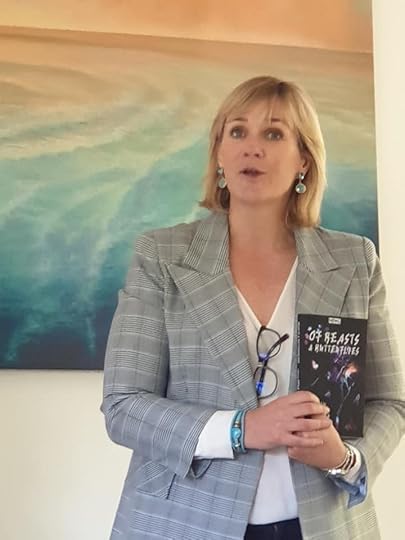
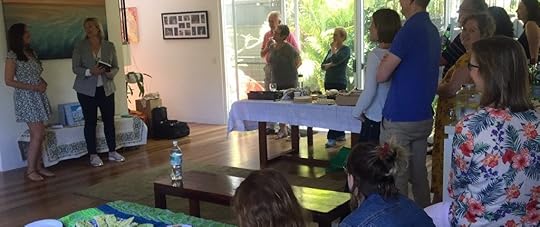
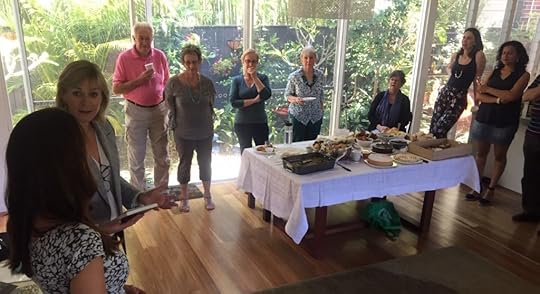

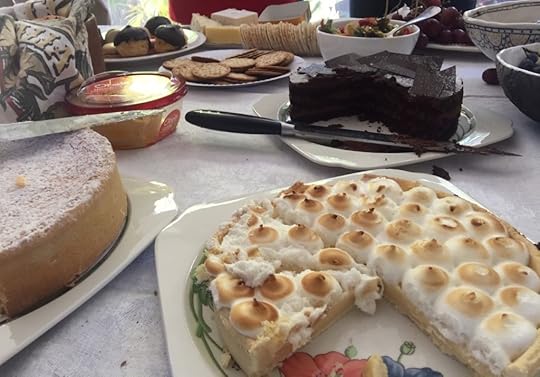
Thank you to our sub-editors who gave up their valuable time to read and edit stories, often multiple times: Phil Burgin, Suzi Green, Megan Holbeck, Azmeena Kelly, Joanna Mawson-Lee, Tony McFadden, Mijmark, Tara Ray, Rose Saltman, and Susan Steggall. Thanks also to our exceptional proofreaders who gave up their valuable time to hunt for typos: Rodney Jensen, Rebecca King, Campbell McConachie, Tara Ray, Howard Reid, Rose Saltman, Amy Spurling, and Susan Steggall.
Finally, I’m sure everyone would like to
thank their friends and families for their support, as I would like to thank
mine – your support and acceptance are the backbone to everything I do. You
know how I love books!
‘Of Beasts & Butterflies’ is now available for sale at most online bookstores, as well as through the NBWG over here.
October 21, 2019
Turning to Words When Times are Tough
The concept of releasing powerful feelings through artistic activities, ie ‘catharsis’, was considered as long ago as Aristotle in his Poetics, 384-322 BC, where he said a tragic play should provide an outlet for the audience’s emotions of pity and fear.
Centuries later, scientists now confirm that turning to words when times are tough – when experiencing powerful emotions or a traumatic event – is a highly successful coping mechanism. According to Dr Matthew Lieberman, a neuroscientist at the University of California, expressing yourself in print is “a sort of unintentional emotion regulation”. In fact, the act of writing about personal experiences inhibits those parts of the brain linked to emotional turmoil, and increases activity in regions related to self-control. “I think it could play a role,” he says, “in why many people write diaries or write bad lyrics to songs – the kind that should never be played on the radio.”
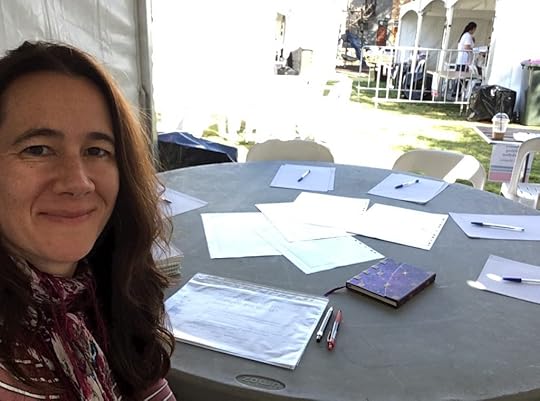
I agree! Which is why I taught seven poetry workshops back-to-back last week at the 2019 Carers’ Day Out, as a part of National Carers Week. Thank you so much Carers NSW for organising – you rock!!
Carers perform stressful and emotional work, and often need a release for such. Yet, at first, many of the carers I met on the day were reluctant to give poetry a go, saying they weren’t ‘good’ at writing.
But, after I assured them that the quality of their writing wouldn’t diminish any cathartic effects, they plunged in, and produced amazing poems! Amazing because they expressed deeply-held, honest and raw emotions, and gave insight into unique and meaningful perspectives. The carers were all sincerely grateful for the opportunity to express themselves in words, and to be guided in how to do so. They said they found it healing. Yay! Mission accomplished!
With the carers’ permission, here are a few samples (of the shorter poems):
Lego
The Lego hits the floor,
The dining chair is upended.
You scream, so loud,
It’s ear-splitting.
–
You swear, hit, kick,
“I hate you!” you yell.
You sob and fall to the
Floor.
–
I come to you,
I bundle your shaking little body,
And lie with you,
Arms tightly around you.
–
You sob, cry, shake.
“I love you,” you say.
I nuzzle your neck.
“I love you, too.”
Sofia
Alone
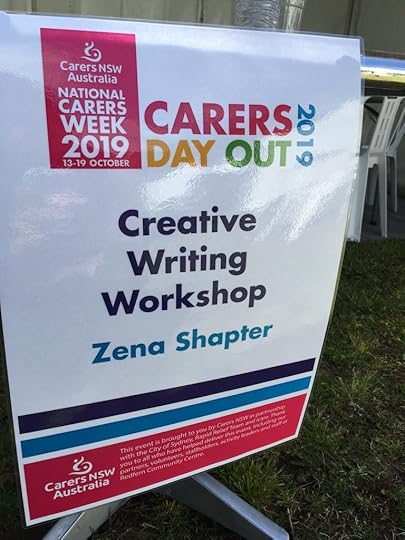
Alone, I sit among my friends,
Darkness clouds my mind.
I don’t know how to be joyful,
Just mask things with a smile.
No one knows how I really am,
They all think I’m fine.
Oh how I wish this was true,
But darkness clouds my mind.
Deborah
Joy in the Community
Come to the park,
And be with the people,
Hear the music,
While you feel the sun,
Experience the joy
Of being a part
Of something bigger
Than being one.
Lee
There were many more wonderful poems, and it was my privilege to guide carers in how to channel their feelings and conjure their creations. Tears were released as well as smiles. One carer was so proud of her poem she read it out over the microphone; and was so grateful for the workshop she made me a badge in thanks!
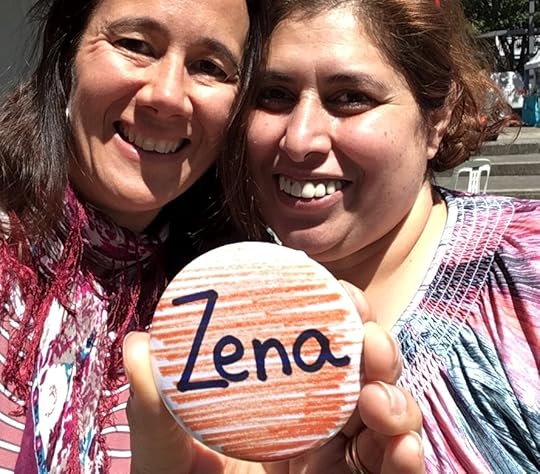

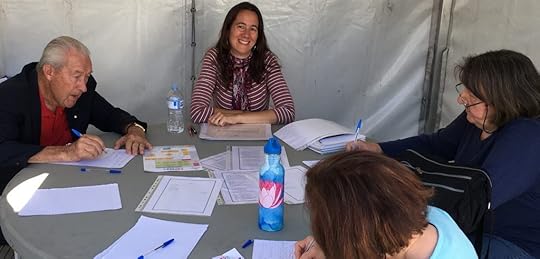
Most importantly, anyone can do it! So… the next time you’re stressed or upset – try writing about your emotions! It’s free and might just help!
If you don’t know where to start, send me a message and I’ll give you some free tips :0)
September 16, 2019
‘Saltwater’ Launched – the first of its kind! @beachescouncil
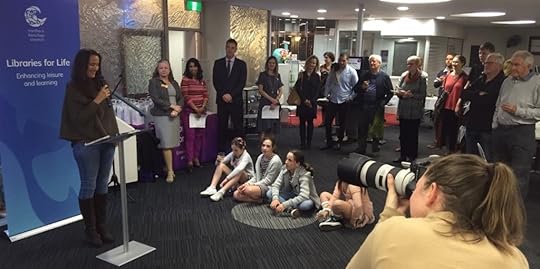
In the beginning, physicist David Deutsch says the universe was pretty boring – lots of big things formed like stars and planets, and always it was those big things affecting small things. But then, the whole nature of the cosmos changed and big things came to be determined by small things, such as us humans and how our evolutionary progress takes gargantuan leaps forward from the smallest of ideas.
So it was last week when I proudly helped launch my ‘small’ idea about publishing a collaborative community anthology into the gargantuan ‘Art & Words Project’, featuring 24 local writers/poet and artists. Wow! I’ve never felt such warm vibes from a room. Writers and artists were overjoyed to meet each other for the first time, others had already met up during the project and were glad to be reunited, all the fabulous artworks were on display, and copies of the anthology almost sold out! It felt like a family coming together – igniting and strengthening connections, sharing interests, crossing the bounds of creative isolation to work together. What a night!
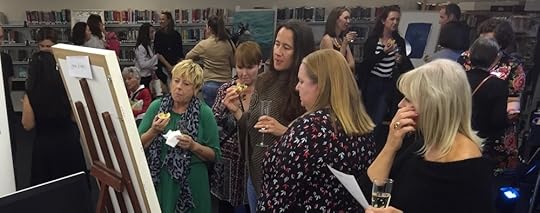 Browsing Artworks
Browsing ArtworksMayor Michael Regan gave a wonderful speech about reaching out to the council with more ideas (I sure will!) and how much the council wanted to support the community’s creativity. It was so good to hear, because any one of us might have an innovative idea, and act on it, to benefit the greater many. Small things affecting big things!
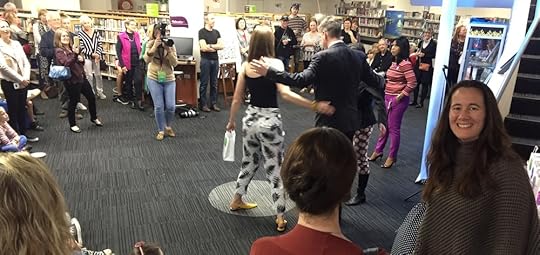 Watching Awards
Watching AwardsI gave a speech too, about forging community connections and flexing superpowers. A lion may sneak into our village at night, I told everyone, and eat one of us for dinner; but the next time it comes prowling we’ll be ready, together – because humans excel at cooperation, collaboration, communication, even with strangers. Thanks to the Art & Words Project, these artists, poet and writers certainly flexed their collaborative superpowers! Once all the writers had written a short story or poem on the theme of ‘Saltwater’, and I’d edited them, artists dug deep until they felt a response to that story, and then created a work of art from it – using oils, pencil, ink, acrylic, copper etching, fabric, collage, photography, or even mixed media waste.
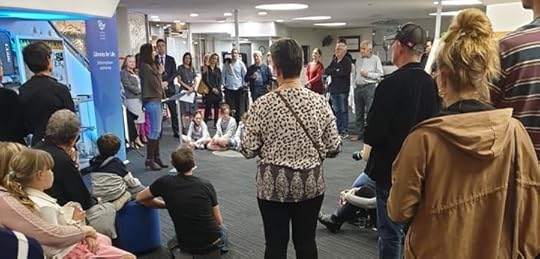
I also spoke about evolving concepts of
creativity, because artistic expression needn’t be segregated by media.
Artworks don’t have to speak without words. Writings don’t have to whisper
blindly. That’s not how we experience life. Life, as well as our creative
expressions of it, can be multi-dimensional, multi-layered, multi-form; it can
overlap and entwine, evolve and stimulate, reflect and deepen to offer viewers
a more immersive realistic dynamic experience. Different types of creators can
collaborate together. The ‘Art & Words Project’ proved exactly that! Just
as technology constantly evolves, so must culture and creativity.
Which is why I’d encourage everyone reading
this to think outside of yesterday’s box – keep our culture and creativity
evolving, keep suggesting, pitching. You never know when someone out there’s
going to say ‘yes, actually that’s a good idea, let’s do it’. And don’t just
think for yourself, do it for other creators, with other creators. Reach out.
Think collaboration. Think connections. Think creatively. Think family.
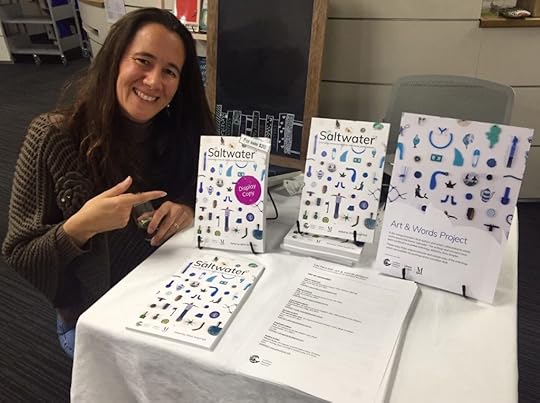
And on that note I’d like to thank mine –
for the long hours Mummy spends trying to change the creative world of our
community, little by little. You’re too kind and patient for your own good. The
iceberg of volunteer work can run deep into family time.
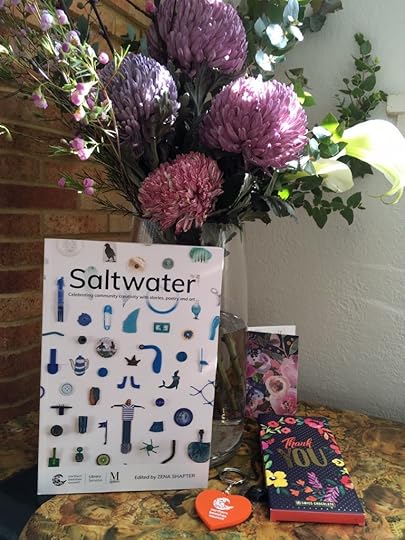 ‘Thank you’ flowers, and chocolate of course!
‘Thank you’ flowers, and chocolate of course!Thank you also to the Northern Beaches Council’s Library Services and Manly Art Gallery & Museum for believing and trusting in my vision – especially Megan Sadler and Katherine Roberts. Thank you to all the budget-makers, administrators, staff and councilors who supported the project, and Mayor Michael Regan for your enthusiastic speech. After the launch, I spoke with some staff from another local council, who were already thinking what more they could do. How wonderful! I gave them some ideas. Big things come from little things…
The original artworks and anthology will be on display and available for purchase around each of the Northern Beaches six libraries, as well as on the Manly Art Gallery & Museum 24hr digital screen, during the Manly Arts Festival – on now! Pop in and visit!
August 28, 2019
5 Tips for Young Writers 2019 @mosmanlibrary
Last night I gave my judge’s report at the Mosman Literary Awards 2019, held at Mosman’s Barry O’Keefe Library. This annual prose and poetry competition attracts budding writers, poets and playwrights from schools across the state, all of whom compete for a share in the $2,000 prize pool.

I’m the judge for the Senior Prose section (for high school students in years 10, 11 and 12), and as in previous years, there were some amazing short stories. Instead of my usual shortlist of 10, I had a shortlist of 15 and each of them deserved recognition!
Here’s an overview of the entries:
 Reading all the entries!
Reading all the entries!Story topics ranged greatly and included the
experience of blindness, organ transplants, clowns, colonisation, siblings,
alcoholic parents, abuse, grief, social media, dance, rebellion, torture,
serial killers, the environment, unlikely friendships, disability, artificial
intelligence, robots and drowning. POVs (points of view) varied too, with some
interesting perspectives being those of a musician, cowboy, NYPD cop, princess,
refugee, corpse, and chimpanzee!As well as the here and now, settings included
the beach, space, WWI, WWII, a zombie apocalypse, an asylum, a desert,
hospital, China, India, USA, and Vietnam. There were also several brave attempts at using
alternate narrative structures such letters, emails, and passages of myth or
poetry.
As for the standout skill of the year, whereas last year it was character development, the standout skill this year was use of language. I had to re-read many sentences or turns of phrase simply because they were so utterly sumptuous. Young writers are definitely paying attention to the words they’re using and demonstrating how powerful the right words can be in the right place. Words can make readers cry or laugh, furious or joyful, and these writers really made me want to stop and think, to absorb the meaning in their words – well done!
However, use of language is not all there is to a good story, so I have five tips for young writers keen to progress:
Prioritise story. The key element to any story is story itself. Readers have to be able to understand what you’re trying to say. Often as a reader I didn’t have any clue where I was, what was actually happening or whom was speaking, whereas just a hint would have helped ground me. Readers can wait for clarification. Mystery can build. Awaited truth reveals can delight. But talking heads in an undefined space risks actually engaging the reader. A strong narrative voice is only intriguing if readers can also understand (roughly) what a character is doing and where. Avoid withholding basic information from the beginning.Lead your readers to an ending. Some endings were too ambiguous. You don’t have to give the reader definite answers. Ambiguity can give the reader freedom to make up their own minds about what happens next. At the same time, it’s about balance. You need to at least show the reader which paths your character might chose. What’s the character thinking? What were their initial goals? What choice do they have? The strongest endings clearly expressed these elements.Add a title. Titles are a chance to hint at a story’s subject or theme. While you know the story you want to tell, readers don’t. A title can help prevent confusion by guiding readers towards your premise from the outset. Title your work.Avoid naming emotions. If you’re mentioning the name of an emotion, it’s a sign you might be ‘telling’ rather than ‘showing’. Can you show your character’s emotions through their thoughts or actions? Consider alternate options to simply stating how a character feels.Check spelling & grammar – especially changes in tense. Read your work aloud or get someone/your computer to read it to you. This should help you hear tense shifts even if you can’t see them. You may also hear missing or extra pronouns. Just watch out for homophones such as their/there, except/accept, break/brake, steal/steel – speaking programs won’t help you identify those.
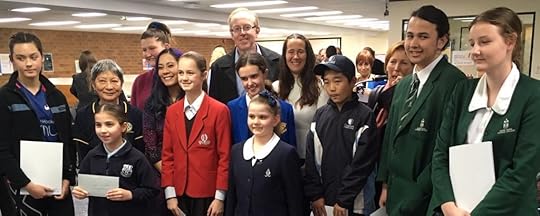 Winners!
Winners!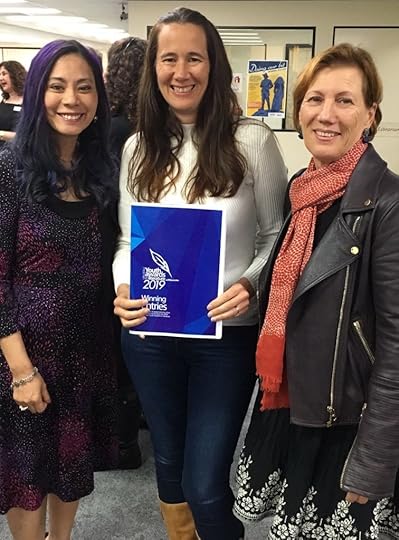 Judging!
Judging!The winning entries did all of the above and more. They possessed a strong narrative force that threw me into the story and maintained an element of mystery all the way through, keeping me wondering what was going to happen until an ending that completed the story with a satisfying resolution. They entertained, offered insights, kept and got the reader exactly where they wanted them. Congratulations! It’s been wonderful to watch you all receive recognition and validation. Keep going, everyone! Keep writing, keep submitting – if you want it, you’ll get there! Last year’s tips are over here. Other helpful blog posts include tips about filter words, over-blight and point-of-view.
Thank you to the Mosman Library Service, especially Linda
Horswell, and everyone who makes these awards possible! You rock!
If anyone (young or old!) wants more tips or advice, I offer one-on-one mentoring, editing, manuscript assessments, and oodles of creative writing classes over here, for every age and level. I also teach writers’ groups, schools, festivals, conferences, and organisations with all these talks over here and more. I love creative writing! If I had my way, creative reading and/or writing would form a part of everyone’s daily routines! Read my own work over here.
As for me, I’m going to sit back now and re-read all the winners!
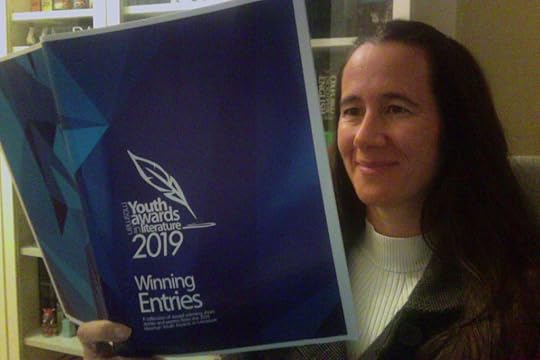
August 15, 2019
Listen to My Story “Shy” on The Manawaker Studio’s Flash Fiction Podcast!
Thanks to The Manawaker Studio’s Flash Fiction Podcast, you can now listen to my flash fiction story “Shy” either by clicking on this link or playing the video below!
Why not read and listen at the same time? The words to “Shy” are here.
Why not compare narrations? “Shy” was also narrated by me back in 2014 on The AntipodeanSF Radio Show! You can listen to that version by clicking on this link. It’s the first story on the show, so just play from the beginning and you’ll soon hear Ion Newcombe introducing me – it’s a pretty awesome introduction too, thanks Ion!
I first wrote “Shy” as a drabble (a 100-word story) inspired by this image:
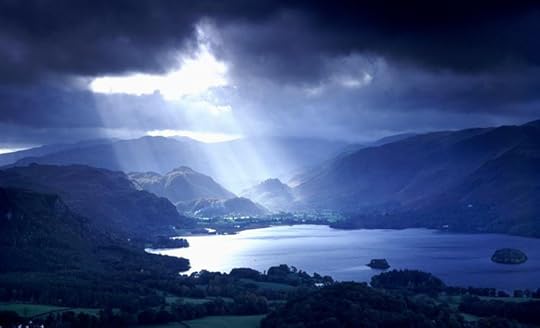
100 words wasn’t quite enough to do the story justice, so I expanded it into a piece of flash fiction, 564 words long.
I love writing stories from images!
In fact, I’m teaching a workshop on doing just that next month during the Manly Art Festival. Join me on Sunday 15 September, 3-4pm at the Manly Art Gallery & Museum – it’s free! All you have to do is register over here for ‘The Hidden Stories in Art’! In only an hour, you’ll create a story with tension and conflict, understand the mastery of resolution, and explore the world-building practices of writing!
In the meantime, I hope you enjoy “Shy”…
July 31, 2019
Challenge: Stamina – How To Keep Going #Creative #Writing #Tips
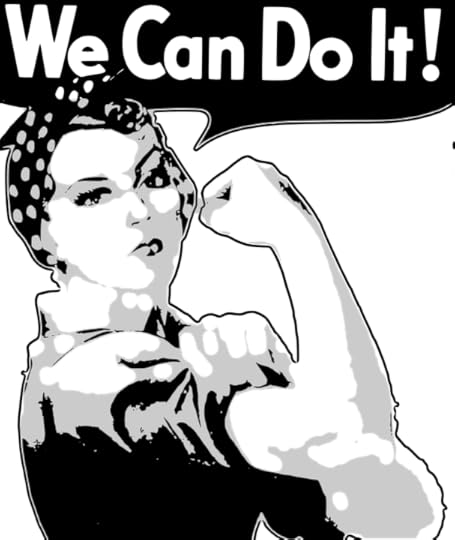
Many years ago I was sitting in a seminar at Writing NSW and a speaker said 99% of the writers in that room would never get published. I looked around. About 150 people were listening. Still, I knew then and there I’d be in the 1%, because I wouldn’t give up until it was me. Other writers could give up, but I’d keep going. Decision made.
Of course it hasn’t been as simple
as deciding, then doing. Like any challenge, career or personal, the long
journey to success can eat away at your self-esteem and initially there’s
little financial reward for all your efforts. Even when the money does start
rolling in, few published writers manage to make a living with their writing
alone. It often feels like it’d be easier to give up.
Not for me of course – as I’m so
enormously successful (ha ha!).
Well, all hilarity aside, according
to my friends and family I do have a knack for stamina. They say I’m focussed,
driven, tenacious, determined… wilful. They say it as if it’s a natural gift,
something I was born with, and to a degree they might be right because we’re
all born with certain skills.
I remember catching buses far and
wide as a teenager to consult resources at different libraries and museums to
get top marks in my coursework, just so I could get sponsorship for university.
I remember in my twenties spending all my annual leave one year working for
free in various businesses because I needed the experience to support a career
transition. I remember editing a story while in labour, pausing only for
contractions, because I wanted to complete its first draft before my baby was
born.
However, none of this means I face challenges with ease – stamina is only a sturdy beast if it’s fed the right nutrients, given constant attention, and loved for what it is.
Over the years I’ve devised ways of conjuring and encouraging stamina, so I thought I’d share my top ten tips. Hopefully they might help you in some way, regardless of whether your challenge is creative or physical, personal, career or organisational…
1. Promise yourself.
Make a deal with yourself right now that, the next time you experience a setback and feel like giving up, you won’t, merely because of today’s promise. When that future time comes, you’ll shun every doubt, ignore the naysaying niggles, and just keep going. Promise yourself not to waste any more time on considering alternatives – that’s precious time you could be spending on your challenge! Re-centre yourself through your promise, and carry on.
2. Give up.
Conversely, consider the alternative – giving up. In particular, imagine telling others you’ve stopped. How would you feel in that imagined moment? Would admitting defeat aloud make you feel ashamed or angry at yourself? Perhaps disappointed for giving up when you still had more to give? If you haven’t yet tried your hardest, if you really want this and can’t imagine telling anyone you’ve given up, then use those answers to fuel your fire.
3. Remember before.
Since you set yourself this challenge and started pursuing it, have you felt more fulfilled, connected or real? Does your challenge fulfil a part of you that would otherwise languish in a disconnected reality or soulless hell, as it did before? Have you tried other things but keep coming back to this? If so, then your challenge is already so much a part of who you are that you can’t possibly abandon it. Keep going! This is the real you!
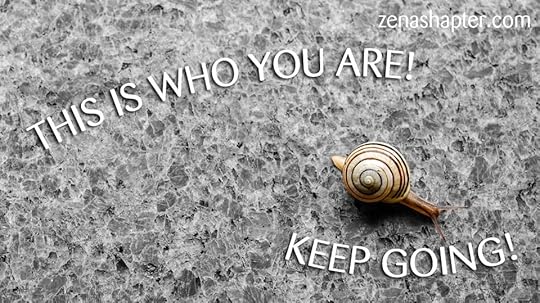
3. Look away.
When you consider the long road ahead, some goals can feel overwhelming. So don’t look at it. Most goals can be broken down into small, achievable steps. Just prioritise which steps come next (what will bring the most value to your challenge?) and focus on the one directly in front of you. Stamina can sometimes be as simple as putting one foot clearly in front of another. Don’t quit, or get distracted (by The Internet!), just take a moment to sit for a bit, then refocus and carry on.
4. Align yourself.
Sometimes fighting for your dreams can be mentally draining, especially when everyone else seems to be having fun because it’s a weekend, the evening, or a public holiday. Try not to think of those having fun; instead think of all the others out there also working on their dreams. They’re doing the same as you, sacrificing to pursue their goals (I’m one of them!), so align yourself with them, straighten out your perspective, and consider yourself part of a community.
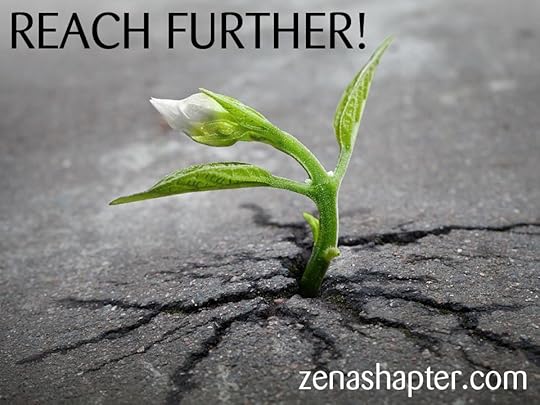
5. Compete consistently.
Every time you reach a target, immediately set yourself a higher goal to achieve next time. Reach further, push harder, think longer, research extra, experiment wider, extend your limits and keep learning. The more you learn and develop your skills, the faster you’ll achieve your goals. Regular goal setting and incremental completions will both keep your skills up-to-date and prevent time slipping away without your getting any closer to your end goal.
6. Celebrate backwards.
Look backwards and see how far you’ve come since you started tackling this challenge. You’ve achieved so much already! Remember how good it feels to get one step closer to your goal. Other people, further behind you on this journey, would love to be where you are now. Celebrate how far you’ve already come, use the success of it to spur yourself on, and realise that the end goal is closer than it used to be. You’ve come too far to turn back now!
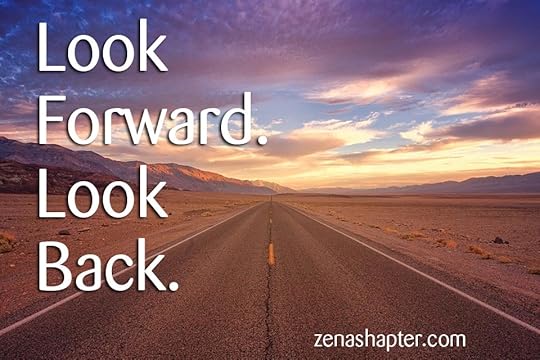
7. Celebrate forwards.
Visualise achieving your end goal and imagine the validation you’ll feel. You’ll have made the right decision in committing to this challenge, and you’ll be so grateful you made it all the way to the end. Focus on that end result now, and use it to motivate yourself.
8. Clear Rest.
A lot of challenges involve time, money and sacrifice. It’s easy to exhaust yourself, feel pressured, or lose sleep. That kind of lifestyle isn’t sustainable and can lead to burnout. Don’t risk burnout! Balance your commitment against scheduled time off, with clear boundaries, and again no distractions! Don’t let distractions reduce the efficiency of your work, rest, or challenge, as each element can influence the success of the others. Allow your mind to be bored, rest your body, eat healthily, drink water, exercise, reduce stress, and revive.
9. Seek positivity.
Surround yourself with people who also have goals and are facing challenge, and absorb their positive attitude. They don’t have to be facing a challenge similar to yours, it could relate to any goal. Exchange stories, compare tactics, and listen to how they achieve, then use their experience to inspire you. If you do find someone with a similar goal, propose being accountable to each other for achieving a certain goal by a certain time so you both stay on track.
10. Develop confidence.
As with stamina, confidence is a skill to be practiced, developed and improved. Monitor the things you tell yourself, interrupt any negative thoughts, and replace them with productive and positive mantras. Try not to get too discouraged by setbacks – everybody has them. Give yourself positive feedback. You have the skills and knowledge to do this (and if you don’t you can develop them)! You can do this!

Of course tips are easier to read than put into practice. I still have to remind myself to do these things! To reduce distractions, for example, I’ve moved my phone out of the bedroom so I’m not checking emails until work hours start, so I can rest when I’m resting. To keep up my confidence, I display past achievements on my bookshelves and in frames around my desk, and set myself weekly word count targets I can easily achieve. Last year I developed a ‘Writing Resilience’ playlist of music, to keep me inspired by others’ experiences at facing challenge, and to share ways to handle stress I blogged about 15 Ways to Survive While Under Pressure.
What about you?
Have you got any tips or stories to share on developing or maintaining stamina?
July 3, 2019
A Changing World – Highlights from the 2019 Speculative Fiction Festival @WritingNSW

Check today’s date – because ten years from now life as we know it will no longer exist. A simple diagnosis from your doctor will involve consulting your genome sequence. Climate change will have altered every landscape. Virtual reality will be fully integrated into our everyday routines. We may not even need our human ‘meat sacks’ to exist and might have uploaded our conscious minds to The Cloud.
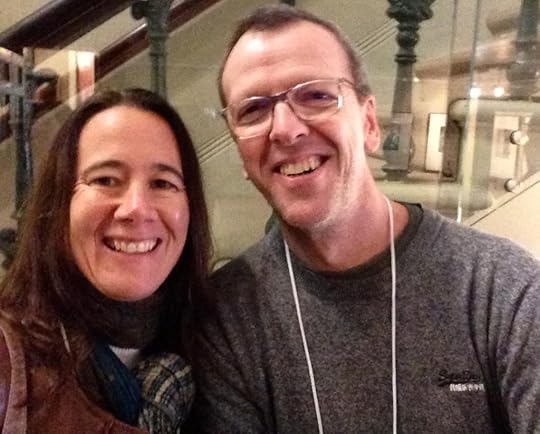 Me + Festival Director Keith Stevenson
Me + Festival Director Keith StevensonOnly last week, I wrote an article for a parenting magazine about how vital creativity will be for the future of our children, given the speed of technological progress. What I discovered at the 2019 Speculative Fiction Festival last weekend only affirmed that view.
Change today is rapid, and speeding up, and affecting all areas of life – including speculative fiction.
That Was Then, This Is Now
The festival opened with a modern-day examination of various gateway novels, books that got panelists hooked on the genre. Popular favourites such as Mary Shelley’s Frankenstein (1818), Bram Stoker’s Dracula (1897) and HG Wells’ War of the Worlds (1898) were each so old they could be forgiven by panelist Rob Hood for their outdated literary style and lack of female characters.
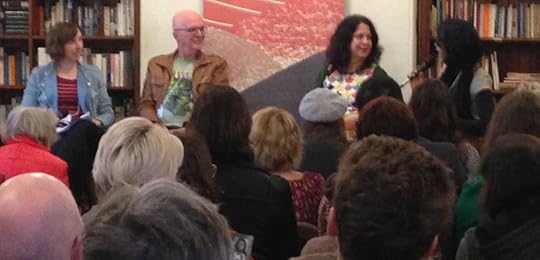
Stephen King’s The Shining (1977) gave panelist Kaaron Warren permission to be scared and got her writing horror, but also taught her errors not to make again. Hindu mythology and David Eddings’ Pawn of Prophecy (1982) opened up worlds for panelist Shankari Chandran, the latter also being her literary equivalent of ‘cheese on toast’; though were also full of bigotry, racism and sexism, with simple characters and stereotypical tropes. As I often tell my creative writing students and editing clients, the way authors write today is very different from how we wrote even twenty years ago, and for good reason – the literary landscape has changed. The rise in visual entertainment such as television and film means readers love being able to see ‘a movie in their head’ as they read, an affect seriously compromised by afflictions of ‘Over Blight’ or ‘Filter Words’ (click for free editing tips on both!). Our changing social and moral code also mean character viewpoints, arcs and descriptions only a decade-old now read as outdated.
Worldbuilding 101
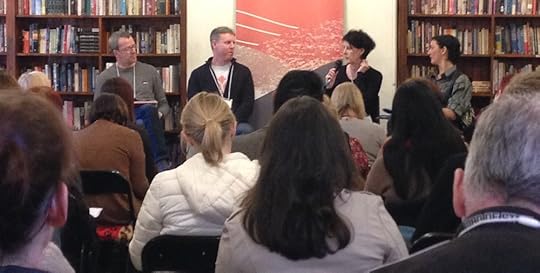
Indeed successful novelists today need to build immersive worlds that will fully engage readers without offending them. Epic fantasy panelist Mitchell Hogan usually starts his worldbuilding by defining the exact rules of a magic system, though shies away from religion to avoid offending readers, a safer bet being ‘ancestor worship’. Both panelist Catherine McKinnon and science fiction chair Keith Stevenson prefer to start by worldbuilding a place or planet, then asking questions of that place until they’ve created an appropriate social and political system, within which certain characters can then experience misconceptions and change; whereas fellow panelist Mykaela Saunders focuses on the concept of sovereignty in the future and climate change, thus exploring the present through the future.
The Art of the Deal
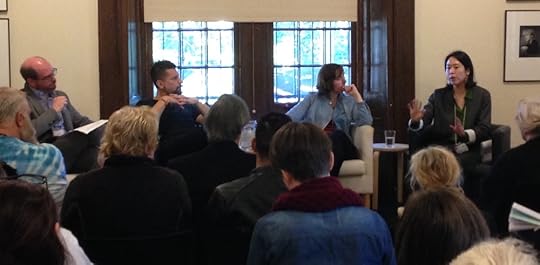
Even the way authors get their work to readers is changing, with book contracts addressing (though not necessarily making good use of) rights for different media, such as film rights, audio and translation. Chair David Henley urged authors to only retain film rights if they had good industry contacts, a view supported by publicist Brendan Fredericks who said, “ask yourself, what are you going to do with any rights you retain?” Fantasy panelist Tiffany Tsao kept her translation rights, for example, as she had industry translation contacts in Indonesia. Authors still generally have little influence over how their books are marketed to the reading public, though can now nominate dealbreakers such as the use of ethnic motifs and symbolism on a book cover. Epic fantasy author Sam Hawke was too overwhelmed by the joy of selling a book to a commercial publisher to have any dealbreakers.
Don’t Worry! Self-Publishing Doesn’t Mean
‘Do It Yourself’
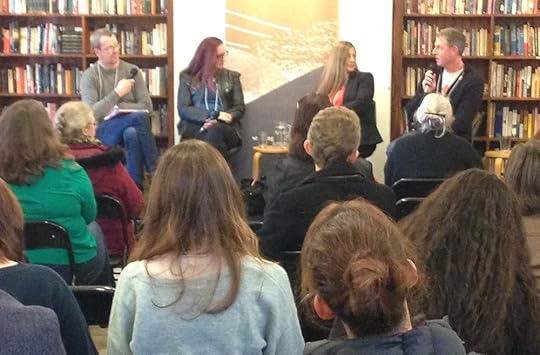
Independent ‘indie’ or ‘self’ publishing is still on the rise as an alternative to commercial publication, with panelists Mitchell Hogan, Dionne Lister and Abigail Nathan all agreeing the option involves authors learning to treat their writing like a business and their name like a brand. As you may know, I run a creative support business myself, helping writers turn their stories into books with editing and assessments, formatting, publishing and printing; but, once their words go ‘live’, an indie author really needs to separate their personal life from the business of selling their work. Abigail urged authors to ‘take the romance out of it’, Mitchell suggested authors concentrate on building an audience, and Dionne suggested meeting other indie authors online and learning from their knowledge. “Don’t give up,” she added, “just because of one bad review,” as there are plenty of other readers out there. She recommended reaching bookworms through Booktastik, a website set up only a few years ago to promote book deals, competitions and promotions directly to readers. The panelists also agreed editing prior to publication was vital to developing your brand, and to shop around for a good price. As a writer, Dionne said, it’s important to employ an editor because “you can’t see the kinks in your own writing as you’re too close to it.”
The Creeping Dread, The Frightful Scare
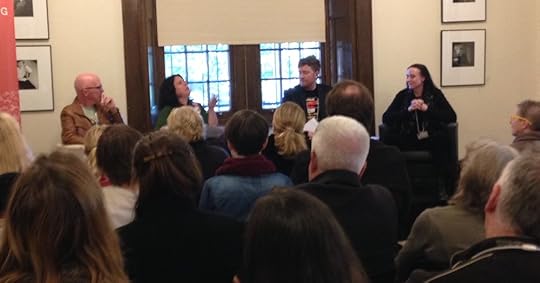
Readers are still reluctant to get close to horror writing, however, reported Kaaron Warren and Rob Hood on the horror panel, with one reader saying one of Kaaron’s books wasn’t horror. “She liked it,” Kaaron said, “so she didn’t want it to be horror.” Rob Hood agreed that horror “often gets dismissed as a genre”, whereas it actually offers hope – because as a reader you’ve survived the book. Panelist Kyla Ward said she likes to “get through the readers’ defences” as a writer and believes poetry can tell horrific stories “quite economically with great intensity.” Aaron Dries offered a definition of horror as extreme empathy, “something you feel in your guts,” and admitted he had a fundamental fear of losing his identity, such as through Alzheimer’s, mostly due to his day job working in trauma recovery.
The Real And The Not Real
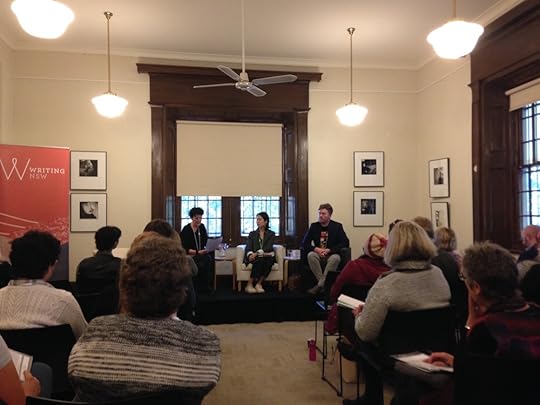
Aaron also explained that, for him, horror isn’t about “the monster in the cupboard”, it’s about the family who owns the cupboard, for which he also takes inspiration from his day job, particularly conversations he wished he’d had but which he hadn’t been awarded. Fantasy panelist Tiffany Tsao also took her influences from lived experiences, particularly of hoping she might fit in somewhere.
Science Fiction Now
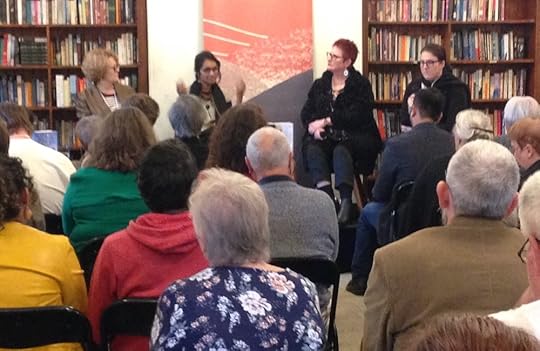
Panelist Shauna O’Meara urged authors to create worlds that normalized features we wished fitted more into our present, such as solar panels and electric cars, though also voiced the danger of speculative fiction becoming “awareness porn”. Chair Cat Sparks furthered this, fearing that “science fiction fails as a literature of purpose because it’s ghettoized as entertainment and not taken seriously. The label is damaging to the literature.” Whereas, she added, “we are the people who can see the future.” Panelist Shankari Chandran called science fiction a “Trojan horse for empathy” in that “it’s thrilling and entertaining but, without knowing it, you’re being schooled and challenged to wonder why the present day order exists? You don’t know that’s happened until it’s happened.” Fellow panelist Margaret Morgan agreed that science fiction authors can “marshal creativity for political causes”, though it’s also not needed as authors have no responsibility as creators to instigate social change.
Ideas Generator
Panelist James Bradley agreed that science fiction is limited in its ability to change the world, yet posited that it can influence it, since the purpose of fiction is empathy. Scientist Michael Gillings pointed out that public opinion can flip in a decade due to egalitarian ideology, as it did with such social changes as slavery, votes for women and same-sex marriage. “Science fiction,” he said, “offers the potential for collective learning about ethics, morality, philosophy.”
The festival then closed with thoughts to the future, such as genome sequencing and virtual reality. “Everything,” said panelist Elise Bohan, “has evolutionary underpinnings. The biggest threat to life is not AI (artificial intelligence) but humans. We have not evolved enough to cope with the technology we have. We are wired to think tribally and short-term.” Michael Gillings joked that, “a good plague would solve everything,” though also spoke about dysbiosis and in particular a reduction in our microbial flora relatable to a rise in anxiety and depression and a susceptibility to disease. Given the amount of bacteria living in symbiosis within our bodies, he also offered the terrifying idea that “maybe we’re not really the ones driving the bus!” It might sound like a horror novel, but writers often use theories and ideas at the cutting edge of scientific study and technology to inform their stories, and so I left the festival incredibly inspired, my creative imaginings fired about what the future might be like.
What About You?
Whether you were at the festival, or only reading about it through my blog, what do you think the future holds?
Do authors have a responsibility to instigate social change? As a reader, do you like to learn something about our world, humanity and/or its relationship with technology, as well as be entertained (or scared!)? Perhaps your only fear is of the regulation that will inevitably accompany progress in the knowledge industry, and who will own the rights to information?
The only thing I know for sure, is that in sharing our thoughts and experiences we can plot our journey together.
On that note, here are just some of the many wonderful authors I got to hang out with at the festival:
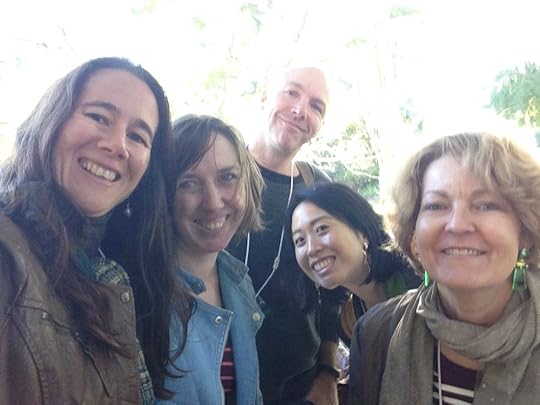 Me + Sam Hawke, Alan Baxter, Tiffany Tsao, Cat Sparks
Me + Sam Hawke, Alan Baxter, Tiffany Tsao, Cat Sparks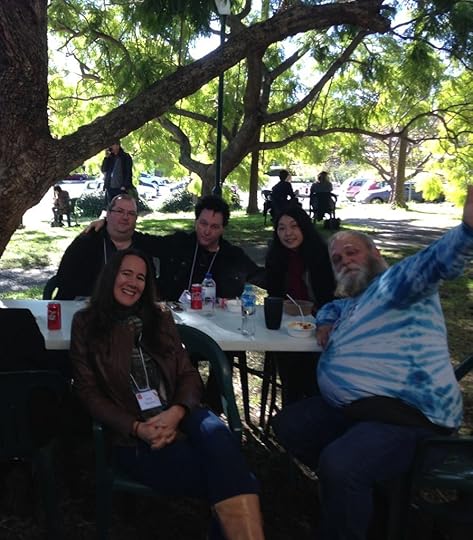 Me + Mark Timmony, Mark Barnes, Anne Mok, Mijmark
Me + Mark Timmony, Mark Barnes, Anne Mok, Mijmark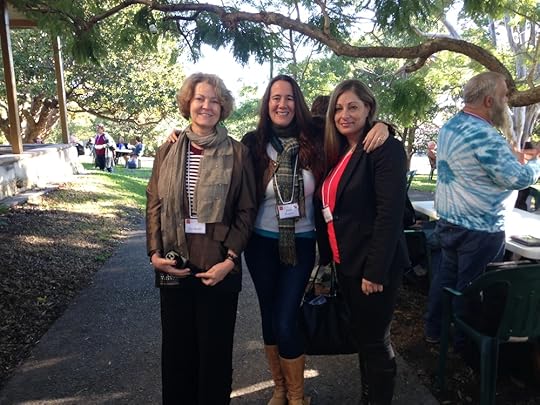 Me + Cat Sparks, Dionne Lister
Me + Cat Sparks, Dionne Lister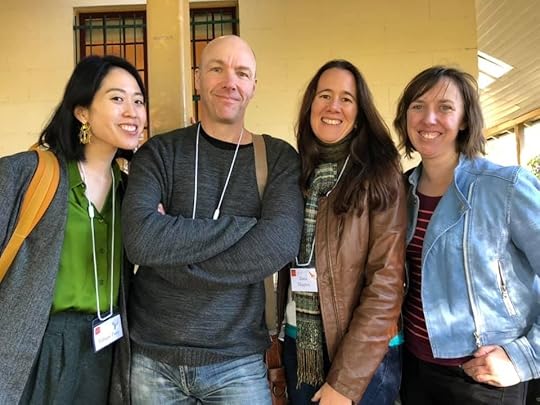 Image: Cat Sparks
Image: Cat Sparks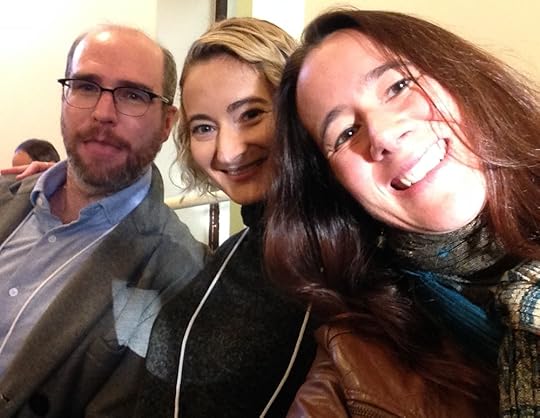 Me + David Henley, Joanne Anderton
Me + David Henley, Joanne Anderton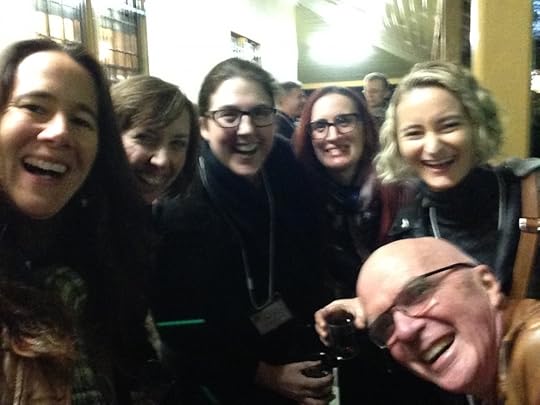 Me + Sam Hawke, Shauna O’Meara, Abigail Nathan, Joanne Anderton, Rob Hood
Me + Sam Hawke, Shauna O’Meara, Abigail Nathan, Joanne Anderton, Rob Hood
July 1, 2019
Kri-ei-tiviti for your child’s future!
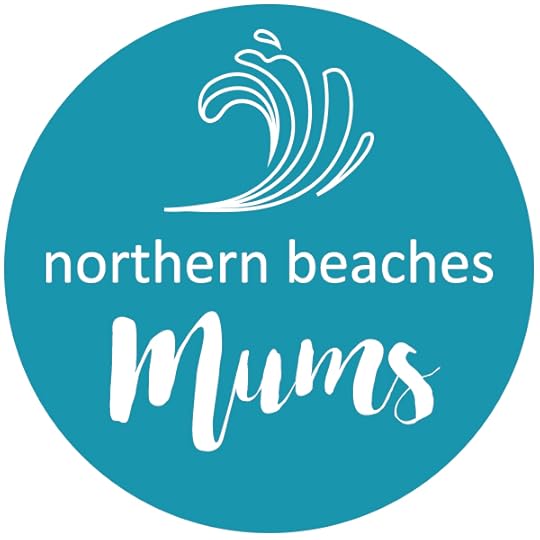
This week I’m over on the Northern Beaches Mums’ website talking about the power of creativity, children and how it will save their future. Creativity is crucial for raising the next generation of innovators whose mindset and problem-solving skills will solve today’s (and tomorrow’s) greatest challenges. Here’s my article:
Kri-ei-tiviti for your child’s future
Have a read and let me know what you think! After all…
…we all have the capacity for creative thinking, and like a muscle it can be exercised. Children can easily deduce the word ‘creativity’ from kri-ei-tiviti because they don’t have the ‘burden of wisdom’ that gives adults ‘functional fixedness’, which prevents them from solving problems in a creative way. However, it’s a skill that can be nurtured and developed, as long as we first accept it’s a skill that needs development. Just like soccer and ballet, we can’t expect to walk onto a pitch or stage and perform well without practice.
If you’d like to read more, the rest of my article is over here!
June 15, 2019
Artistic Collaboration: Forest Ambassadors – Exhibition Launch
Yesterday, I had the amazing honour of being an artistic ‘Forest Ambassador’ with the very talented sustainability and natural mixed media artist Gloria Florez and the very talented video installation artist Alyson Bell. Together we created a collaborative exhibition that combined our three very different yet complimentary methods of artistic expression, to reflect the fragility and beauty of nature and, in particular, the Pittwater Spotted Gum Forest, a local but endangered ecological community likely to become extinct. The exhibition was kindly launched by our deputy mayor, the lovely Sue Heins.

Gloria crafted artistic handmade papers that celebrated and reflected the Spotted Gum and taught the process to schoolchildren; I taught those same schoolchildren how to express their love of nature through poetry; while Alyson filmed the entire creation process to construct a reflective video installation. It was fascinating to see how our three different approaches connected so well within a single exhibition, itself therefore reflecting the interconnections of life and nature…
Words of poetry entwined with leaves and twigs in the children’s handmade paper.
Alyson’s video was projected in reverse from behind the hung muslin material that carried the children’s paper creations.
The poem I crafted with the children featured in the video, and was also printed onto the walls. There were pedestals displaying the children’s brainstorms for the words we eventually used in the poem, also backed by handmade paper.
And all around the main exhibition space hung Gloria’s beautiful papered layers of muslin, reflecting the layered nature of the forest.
Words, video and artwork combined to make the exhibition an immersive and dynamic experience – which is currently on display at Eramboo Artist Environment. If you can visit, the exhibition is open 10am-4pm everyday until 23rd June. Otherwise, I took some photos to share with you all:
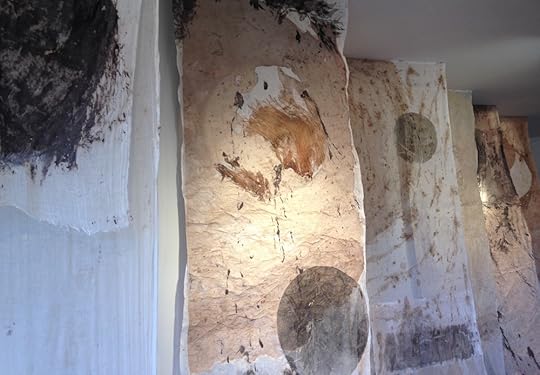

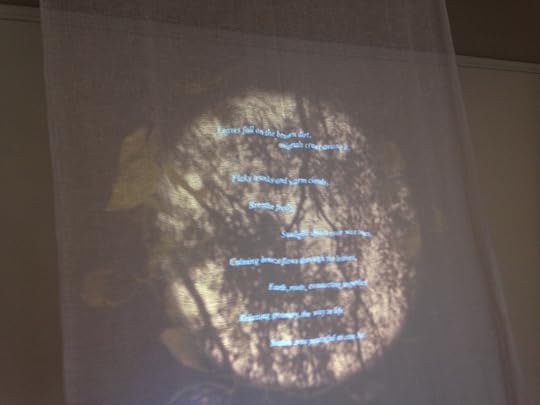

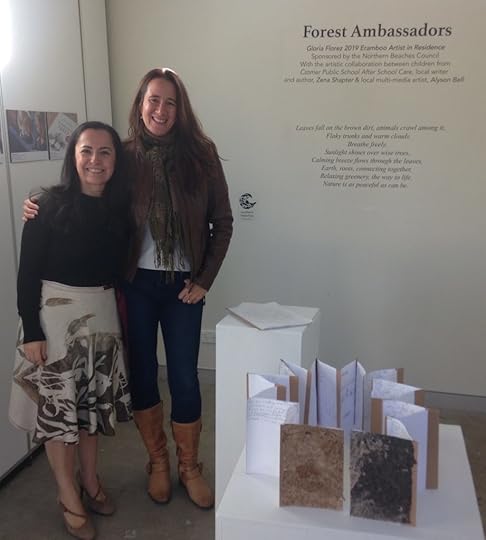 Gloria and I
Gloria and I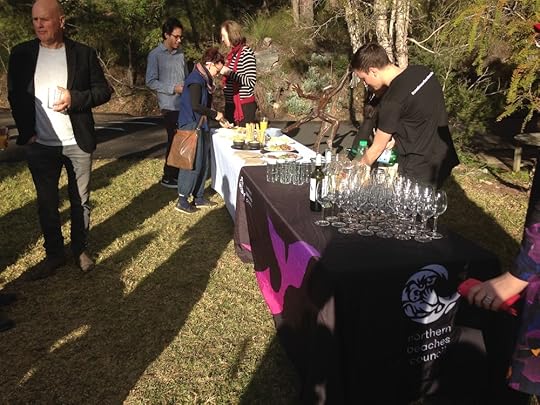
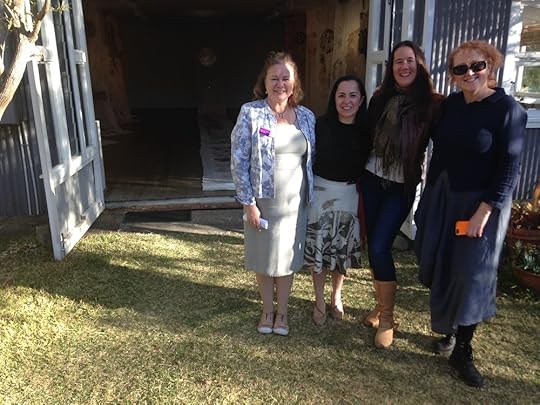 Deputy Mayor Sue Heins, Gloria Florez, me and Alyson Bell
Deputy Mayor Sue Heins, Gloria Florez, me and Alyson Bell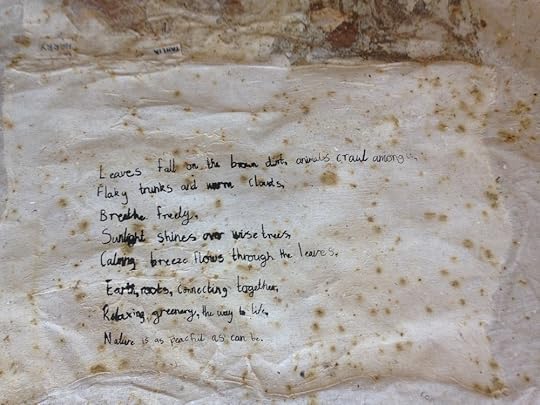
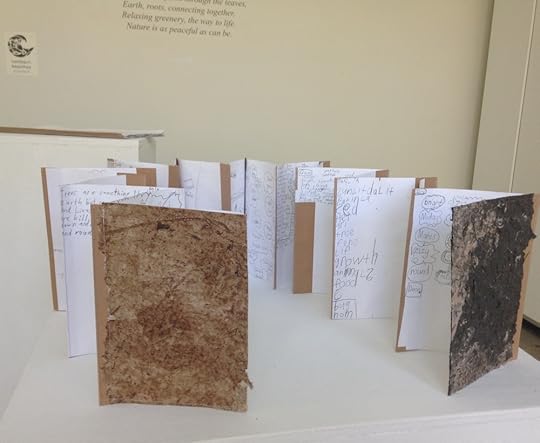
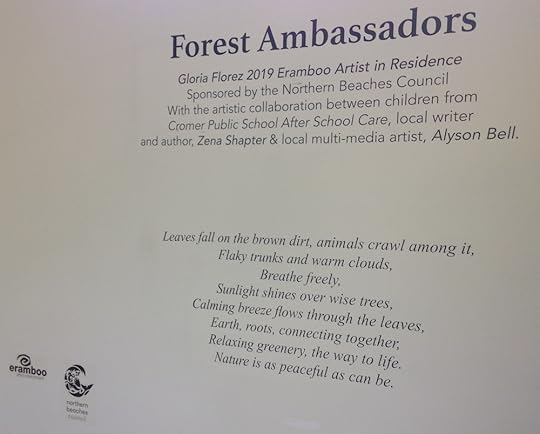
Gloria is an incredible artist, and I thank her for having the idea to collaborate with other artists as part of her six-month artist residency at Eramboo, sponsored by Northern Beaches Council. I find it so rewarding to work collaboratively with other artists, whether they’re writers like myself or visual artists like Gloria and Alyson, as both process and result are multi-dimensional, artistically fulfilling, and inspiring. Art needn’t be segregated by media, it can overlap and entwine, evolve and stimulate, reflect and deepen the experience for viewers.
Here’s more on the poetry creation process; here’s more about the Pittwater Spotted Gum Forest; and here’s a photo of a Spotted Gum tree at Eramboo itself, isn’t it gorgeous!
